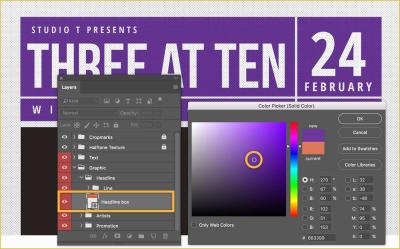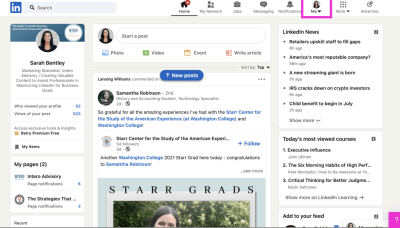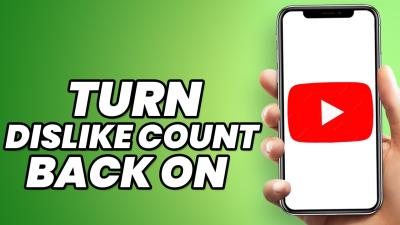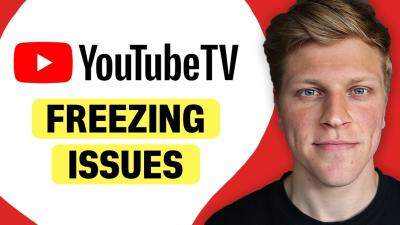YouTube influencers have transformed the landscape of digital content creation. With millions of subscribers and views, these individuals significantly shape consumer behavior and trends through engaging video content. Whether they're sharing beauty tips, gaming strategies, or lifestyle vlogs, their authenticity resonates with audiences. In this post, we’ll explore who these influencers are and how they impact the digital world, making them essential players in today’s marketing ecosystem.
Who is a YouTube Influencer?
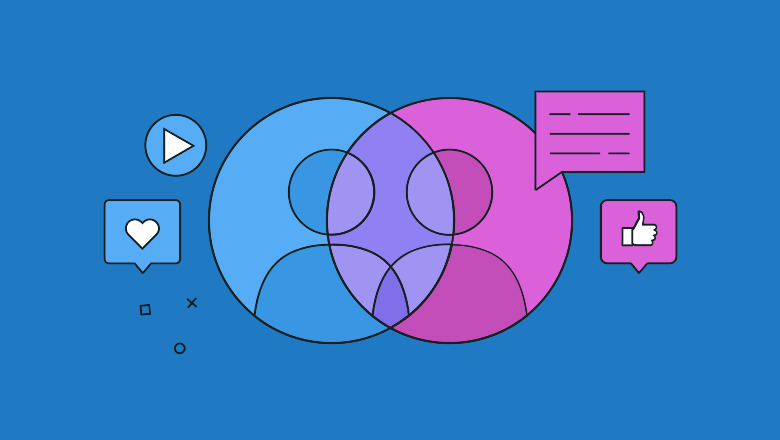
A YouTube influencer is anyone who has established a significant following on the platform, leveraging their popularity to influence the opinions and behaviors of their audience. But to better grasp the concept, let’s dive into some key characteristics that define these influencers.
1. Niche Focus: Most YouTube influencers thrive within specific niches. This specialization allows them to connect deeply with their audience. Some popular niches include:
- Beauty and fashion
- Gaming
- Travel and adventure
- Food and cooking
- Technology and gadgets
- Health and fitness
2. Engagement: Unlike traditional celebrities, YouTube influencers often prioritize engagement over sheer numbers. They interact with their followers through comments, Q&A sessions, and live streams, creating a sense of community. This interaction fosters loyalty and trust, which is invaluable for brands looking to connect with potential customers.
3. Authenticity: Authenticity plays a crucial role in the influencer's appeal. Influencers often share personal stories, real-life experiences, and unfiltered opinions. This transparency makes their recommendations seem more genuine compared to traditional advertisements, leading to higher conversion rates for brands.
4. Content Creativity: The kind of content they create is vital to their brand. Influencers often showcase their creativity through:
- High-quality video production
- Unique storytelling techniques
- Innovative editing styles
- Visual branding elements
5. Monetization Strategies: While many influencers start as hobbyists, most eventually monetize their channels through various means. Common monetization strategies include:
- Sponsored content: Working with brands to create tailored content.
- Affiliate marketing: Earning commissions by promoting products and services.
- Ad revenue: Earning money through YouTube's partner program.
- Merchandise sales: Selling branded goods directly to followers.
In summary, YouTube influencers are individuals who leverage their personality, creativity, and audience engagement to create impactful content that resonates with viewers. They are shaping the way brands connect with consumers in a world where authenticity is key, making them a central force in digital marketing strategies today.
Also Read This: Is YouTube-dl Safe to Use? Exploring the Risks and Benefits
The Evolution of YouTube Influencers

YouTube influencers have gone through a significant transformation since the platform's inception in 2005. Initially, it was a space for anyone with a camera and an idea to upload videos. Some of the early creators, like Smosh and Ryan Higa, gained popularity through comedic sketches and relatable content. Their success set the stage for what would soon emerge as a new form of online celebrity—YouTube influencers.
As the platform grew, so did the diversity of content available. With the introduction of thousands of niche categories—from beauty tutorials and gaming walkthroughs to educational channels—the definition of an influencer began to expand. People weren't just watching videos; they were connecting with creators whose personalities resonated with them. This shift paved the way for influencers to build dedicated fan bases.
Over time, brands recognized the power of these influencers to reach targeted audiences. Partnering with influential YouTubers became a strategic marketing move, effectively bridging the gap between traditional advertising and grassroots personalization. Today, influencers are not merely content creators; they are trusted figures, often guiding consumer choices and trends.
The rise of vlogging significantly altered the landscape as well. Channels like Casey Neistat and Zoella helped viewers feel more personally connected, breaking down barriers between creators and their audiences. This intimacy fostered a sense of community, and as a result, influencer culture became a prominent aspect of online interaction.
Looking at the evolution of YouTube influencers, we can identify several key stages:
- Genesis (2005-2010): Early adopters producing varied content, primarily comedy and skits.
- Growth (2010-2015): Niche content areas start emerging; the influencer concept begins to form.
- Professionalization (2015-2020): Brands recognize influencers as marketing tools; influencer-driven campaigns become common.
- Normalization (2020-Present): Influencers become mainstream cultural figures, often crossing over into other media.
In summary, YouTube influencers have evolved from quirky creators to essential players in the digital marketing ecosystem and pop culture at large. Each step in their evolution reflects the changing dynamics of internet culture and the growing demand for authentic content.
Also Read This: How Much Does Garden Answer Earn from YouTube? Insights
The Role of YouTube Influencers in Content Creation
YouTube influencers play a pivotal role in modern content creation, shaping trends and directing how audiences consume media. Their influence stems from a unique combination of personality, expertise, and an understanding of community engagement.
One critical aspect of their role is the authentic connection they cultivate with their audience. Unlike traditional celebrities, influencers often share their personal stories and experiences, creating a sense of relatability. This transparency leads viewers to perceive them as friends rather than distant figures, fostering loyalty and trust.
Moreover, these influencers have a unique knack for identifying trending topics and ensuring that their content remains relevant. Whether they are diving into the latest beauty trends, gaming releases, or lifestyle hacks, they are often at the forefront of what's hot in the digital landscape. This ability to trend-set has made them invaluable to brands looking to connect with younger audiences.
YouTube influencers also contribute significantly to content diversification. They experiment with new formats, from live-streaming to immersive virtual reality, helping to keep the platform fresh and engaging. Their creative freedom encourages bold experimentation, allowing users to experience content in previously unimagined ways.
From a monetization perspective, influencers have opened up numerous channels for revenue generation. This includes sponsored content, affiliate marketing, merchandise sales, and even brand collaborations. Because influencers tend to have highly engaged audiences, brands find it financially viable to invest in these partnerships, often yielding substantial returns on investment.
Furthermore, the impact of YouTube influencers extends beyond YouTube itself; they often take their brand and influence to other platforms like Instagram, TikTok, and podcasts, reaching an even broader audience.
In a nutshell, YouTube influencers are not just content creators—they are cultural catalysts. Their influence shapes viewer behavior, drives trends, and inspires the next generation of creators. As digital content continues to evolve, so will the integral role of these influencers in shaping what we see, share, and ultimately consume online.
Also Read This: How to Watch MLB Network on YouTube TV: A Complete Guide
5. Impact of YouTube Influencers on Brands and Marketing
When it comes to the digital landscape, YouTube influencers are like the new-age royalty—holding a significant amount of power and sway over audience opinions and, consequently, brand strategies. The impact of these influencers on brands and marketing is profound, and understanding it is crucial for anyone involved in digital marketing.
So, why do brands flock to YouTube influencers? Well, it’s largely about trust and authenticity. Consumers today are more skeptical than ever of traditional advertising methods. They find ads interruptive and often dismiss them entirely. In contrast, influencers cultivate genuine relationships with their audiences. When they endorse a product, it feels more like a friendly recommendation than a corporate pitch.
Here are some key impacts of YouTube influencers on brands:
- Increased Reach: Collaborating with influencers allows brands to access large, engaged audiences that they might not reach through traditional channels.
- Enhanced Credibility: Partnerships with respected influencers can enhance a brand's credibility and improve its image, as audiences tend to believe what their favorite creators say.
- Targeted Marketing: Brands can target specific demographics by working with niche influencers whose followers match their ideal customers.
- Content Creation: Influencers often create compelling content around brands that feels organic. This kind of authentic engagement can lead to a higher conversion rate.
- Trend Setting: Influencers often set trends, which can help brands stay ahead of the curve and adapt quickly to shifting consumer preferences.
Also, the ability of YouTube influencers to track their performance makes them even more appealing to brands. With metrics like views, likes, shares, and comments, brands can evaluate the success of their campaigns in real-time, allowing for adjustments and improvements without the old “set it and forget it” approach of traditional advertising.
For instance, a beauty brand collaborating with a popular beauty vlogger can showcase a product on a platform where millions interact daily. Customers see the product in action, hear a review from someone they trust, and feel a stronger inclination to purchase. This cycle creates a win-win situation, elevating both the influencer’s and the brand's visibility.
Also Read This: How YouTube Serves Users, Creators, and Advertisers: A Comprehensive Breakdown
6. How YouTube Influencers Build Their Audience
Building an audience on YouTube isn’t just a matter of posting content and hoping for the best. It’s a strategic endeavor that requires creativity, consistency, and a dash of marketing savvy. So, how do YouTube influencers cultivate their fanbase? Let’s break it down.
1. Finding a Niche: Many successful influencers start by identifying a specific niche that sets them apart—be it beauty, technology, gaming, or lifestyle. By focusing on a particular area, they attract a dedicated audience that shares those interests.
2. Creating High-Quality Content: Quality is king on YouTube. Influencers invest in good cameras, sound equipment, and editing software to create visually appealing and engaging videos. This attention to detail helps in retaining viewers and encourages them to subscribe.
3. Engaging with the Audience: Interaction is key! Influencers often respond to comments, ask for viewer opinions, and create content based on their audience’s suggestions. This fosters a sense of community and makes viewers feel valued.
4. Consistency is Crucial: Regular uploads keep the audience engaged and coming back for more. Many influencers adhere to a schedule—be it weekly, bi-weekly, or even daily—to maintain momentum and viewer expectations.
5. Leveraging Social Media: YouTube influencers often promote their videos on other social media platforms like Instagram, Twitter, and TikTok. This cross-platform marketing helps attract new viewers who may not yet know about their YouTube channel.
6. Collaborating with Other Influencers: Networking within the influencer community is common. Collaborations expose both influencers to each other’s audiences, creating a mutually beneficial situation that aids audience growth.
By focusing on these strategies, YouTube influencers can steadily cultivate a strong, engaged audience—one that not only watches their content but also interacts and shares it with others, perpetuating the cycle of growth and engagement. Ultimately, this strong audience foundation is what allows them to thrive and become vital players in the digital content ecosystem.
Also Read This: How Much Does YouTube Pay Pakistani YouTubers? Insights and Tips
7. Challenges Faced by YouTube Influencers
Being a YouTube influencer might seem like a glamorous job—creating content, gaining followers, and enjoying the perks of sponsorships. However, it comes with its fair share of challenges that often go unnoticed. Here are some of the key hurdles that YouTube influencers face:
- Content Saturation: With millions of creators on the platform, standing out has become increasingly difficult. Influencers must continuously innovate to keep their audience engaged while trying not to mimic others.
- Algorithm Changes: YouTube's algorithms dictate who sees what content. Changes can dramatically affect an influencer’s visibility and revenue, leading to unpredictability in growth.
- Burnout: The pressure to consistently produce high-quality content can lead to burnout. Many influencers struggle to maintain a work-life balance, resulting in mental health issues.
- Negative Feedback: Dealing with criticism is part and parcel of being an influencer. Negative comments—whether constructive or cruel—can affect an influencer's confidence and mental wellbeing.
- Monetization Challenges: While ad revenue can be lucrative, relying solely on it is risky. Many influencers find it challenging to secure consistent income through partnerships and sponsorships, especially when brands prioritize influencers with larger follower counts.
- Changing Trends: What’s popular one day might not be the next. Influencers must stay ahead of trends in content style, audience interests, and platform norms, which can be exhausting.
- Ethical Dilemmas: Influencers often face ethical questions surrounding product endorsements. Balancing authenticity with brand collaboration can create conflicts, as followers might feel that influencers prioritize profit over honesty.
Despite these challenges, many YouTube influencers find ways to adapt and thrive, continually evolving their strategies to overcome obstacles. It’s crucial for aspiring influencers to be aware of these struggles and prepare for them as they embark on their digital journey.
Also Read This: Listening to ‘A Court of Thorns and Roses’ Audiobook on YouTube: What You Need to Know
8. Future Trends in YouTube Influencing
As the digital landscape continues to evolve, the future of YouTube influencing holds exciting prospects. Here’s a look at some emerging trends in this space:
- Short-Form Content: With the rise of platforms like TikTok, short-form videos are gaining popularity. YouTube has responded with YouTube Shorts, and influencers are likely to capitalize on this trend by creating quick, impactful content to reach a wider audience.
- Increased Authenticity: As audiences become more discerning, they’re gravitating toward influencers who are genuine rather than perfect. This trend will push creators to be more transparent about their lives and partnerships, fostering deeper connections with their followers.
- Diversified Revenue Streams: Influencers are increasingly looking towards multiple income sources. In addition to ad revenue and sponsorships, creators are exploring merchandise sales, memberships, and exclusive content through platforms like Patreon.
- Focus on Community Building: Engagement will become more crucial than ever. Influencers will need to create a sense of community among their followers, cultivating loyalty and turning casual viewers into dedicated fans.
- Data-Driven Decisions: Influencers will increasingly rely on analytics to inform their content strategies. Understanding viewer preferences and engagement metrics will help creators tailor their content to better meet audience demands.
- AR and VR Integration: As technology advances, influencers may begin to utilize augmented reality (AR) and virtual reality (VR) in their content, providing immersive experiences that enhance viewer engagement.
These trends indicate that YouTube influencing is at a crossroads, with the potential for significant evolution. For influencers, staying attuned to these shifts will be essential in navigating the ever-changing digital landscape.
Conclusion: The Lasting Influence of YouTube Creators
YouTube influencers have fundamentally reshaped the landscape of digital content creation, establishing themselves as vital contributors to both culture and commerce. Their impact can be observed through several key factors:
- Engagement: Unlike traditional media, YouTube creators foster a unique relationship with their audience, characterized by real-time interaction and feedback. This engagement often results in a loyal community that actively participates in discussions and content sharing.
- Diverse Content: The platform accommodates a wide range of genres, from beauty and gaming to education and travel, allowing creators to explore their passions while reaching niche audiences.
- Brand Collaborations: Influencers have become sought-after partners for brands looking to tap into new markets. These collaborations often yield authentic marketing strategies that resonate with viewers, blurring the lines between advertisement and entertainment.
- New Career Pathways: YouTube has opened doors to various professional avenues for creators, from merchandise sales to public speaking, demonstrating that success can be achieved outside traditional employment models.
As we move forward, the influence of YouTube creators will continue to evolve, setting trends and redefining how audiences consume content. They serve as a reminder of the power of creativity and connection in the digital age, proving that anyone with a passion and a platform can make a significant impact on the world. In conclusion, the lasting influence of YouTube creators not only shapes media but also empowers everyday individuals to voice their ideas and engage with a global community.
 admin
admin




